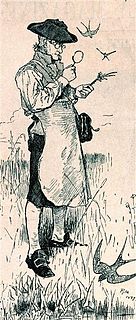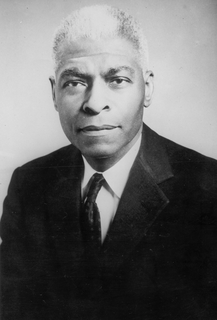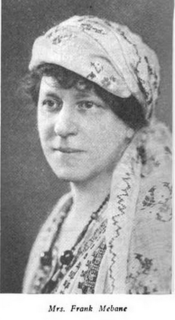Related Research Articles

Benjamin Franklin was an American polymath and one of the Founding Fathers of the United States. Franklin was a leading writer, printer, political philosopher, politician, Freemason, postmaster, scientist, inventor, humorist, civic activist, statesman, and diplomat. As a scientist, he was a major figure in the American Enlightenment and the history of physics for his discoveries and theories regarding electricity. As an inventor, he is known for the lightning rod, bifocals, and the Franklin stove, among other inventions. He founded many civic organizations, including the Library Company, Philadelphia's first fire department and the University of Pennsylvania.
The State of Franklin was an unrecognized and autonomous territory located in what is today Eastern Tennessee, United States. Franklin was created in 1784 from part of the territory west of the Appalachian Mountains that had been offered by North Carolina as a cession to Congress to help pay off debts related to the American War for Independence. It was founded with the intent of becoming the fourteenth state of the new United States.

Free Will Baptist is a denomination and group of people that believe in free grace, free salvation and free will. The movement can be traced back to the 1600s with the development of General Baptism in England. Its formal establishment is widely linked to the English theologian, Thomas Helwys who led the Baptist movement to believe in general atonement. He was an advocate of religious liberty at a time when to hold to such views could be dangerous and punishable by death. He died in prison as a consequence of the religious persecution of Protestant dissenters under King James I.

John Bartram was an early American botanist, horticulturist and explorer. Carl Linnaeus said he was the "greatest natural botanist in the world."

The Territory South of the River Ohio, more commonly known as the Southwest Territory, was an organized incorporated territory of the United States that existed from May 26, 1790, until June 1, 1796, when it was admitted to the United States as the State of Tennessee. The Southwest Territory was created by the Southwest Ordinance from lands of the Washington District that had been ceded to the U.S. federal government by North Carolina. The territory's lone governor was William Blount.

John Sevier was an American soldier, frontiersman, and politician, and one of the founding fathers of the State of Tennessee. He played a leading role in Tennessee's pre-statehood period, both militarily and politically, and he was elected the state's first governor in 1796. He served as a colonel of the Washington District Regiment in the Battle of Kings Mountain in 1780, and he commanded the frontier militia in dozens of battles against the Cherokee in the 1780s and 1790s.

The Founding Fathers of the United States, or simply the Founding Fathers, were a group of American leaders who united the Thirteen Colonies, led the war for independence from Great Britain, and built a frame of government for the new United States of America upon republican principles during the latter decades of the 18th century.

William Few Jr. was a farmer, a businessman, and a Founding Father of the United States. Few represented the U.S. state of Georgia at the Constitutional Convention and signed the U.S. Constitution. Few and James Gunn were the first Senators from Georgia.

Romanian Americans are Americans who have Romanian ancestry. According to the 2017 American Community Survey, 478,278 Americans indicated Romanian as their first or second ancestry. Other sources provide higher estimates for the numbers of Romanian Americans in the contemporary US; for example, the Romanian-American Network Inc. supplies a rough estimate of 1.2 million who are fully or partially of Romanian ethnicity. There is also a significant number of persons of Romanian Jewish ancestry, estimated at about 225,000.

Benjamin Elijah Mays was an American Baptist minister and civil rights leader who is credited with laying the intellectual foundations of the Civil Rights Movement. Mays taught and mentored many influential activists: Martin Luther King Jr, Julian Bond, Maynard Jackson, and Donn Clendenon, among others. His rhetoric and intellectual work focused on notions of nonviolence and civil resistance–beliefs inspired by the teachings of Mahatma Gandhi. The peak of his public influence occurred during his almost thirty years as the 6th President of Morehouse College, a historically black institution of higher learning.
Ann Smith Franklin was an American colonial newspaper printer and publisher. She inherited the business from her husband, James Franklin, brother of Benjamin Franklin. She published the Mintunt, printed an almanac series. She was the country’s first female newspaper editor, the first woman to write an almanac, and the first woman inducted into the University of Rhode Island's Journalism Hall of Fame.

Franklin Israel Moses Jr. was a South Carolina lawyer and editor who became active as a Republican politician in the state during the Reconstruction Era, elected as governor in 1872 and serving into 1874. Enemies labelled him as the 'Robber Governor'. A 21st-century biographer suggests his crimes were limited compared to those of later Democrat Ben Tillman, who contributed to murders of numerous blacks.

Join, or Die. is a political cartoon attributed to Benjamin Franklin. The original publication by the Pennsylvania Gazette on May 9, 1754, is the earliest known pictorial representation of colonial union produced by a British colonist in America. It is a woodcut showing a snake cut into eighths, with each segment labeled with the initials of one of the American colonies or regions. New England was represented as one segment, rather than the four colonies it was at that time. Delaware was not listed separately as it was part of Pennsylvania. Georgia, however, was omitted completely. Thus, it has eight segments of a snake rather than the traditional 13 colonies. The two northernmost British American colonies at the time, Nova Scotia and Newfoundland, were not represented, nor were any British Caribbean possessions. The cartoon appeared along with Franklin's editorial about the "disunited state" of the colonies, and helped make his point about the importance of colonial unity. It later became a symbol of colonial freedom during the American Revolutionary War.
Franklin J. Moses Sr. was an attorney, planter, politician and judge in South Carolina. He served as a state senator from 1841 to 1866, when he was elected to the circuit court. He was elected as Chief Justice of the State Supreme Court in 1868 during the Reconstruction era. In 1876 he was asked to rule on a challenge to election returns in the hotly disputed gubernatorial campaign, eventually won by Democrat Wade Hampton and ending Republican domination in the state.
Joseph Hardin Sr. was an Assemblyman for the Province of North Carolina, and was a signatory of the Tryon Resolves. Early in the War for Independence, as a member of the militia from Tryon County, Hardin fought the Cherokee allies of Britain along the western frontier. Later in the war, having taken his family over the Appalachian Mountains to the Washington District for safety against the advance of the Red Coats out of South Carolina, Hardin joined the Overmountain Men. He saw action at the Battle of Ramsour's Mill and the decisive Battle of Kings Mountain. Following the peace with Britain, Hardin was a co-founder and second Speaker of the House for the State of Franklin; and an Assemblyman in the Southwest Territory before its statehood as Tennessee.

Louis Timothee or Lewis Timothy was a prominent Colonial American printer in the Colonies of Pennsylvania and South Carolina, who worked for Benjamin Franklin. He was the first American librarian.

Elizabeth Timothy or Elisabet Timothee was a prominent colonial American printer and newspaper publisher in the colony of South Carolina who worked for Benjamin Franklin. She was the first woman in America to become a newspaper publisher and also the first woman to hold a franchise in America.

Lily Connally Morehead Mebane was an American relief worker during World War I who was decorated by France and Serbia for her work. She later served in the North Carolina state legislature for two terms, in the 1930s.
The Wilkes County Regiment was authorized on December 9, 1777 by the Province of North Carolina Congress at the same time that Wilkes County, North Carolina was created from Surry County, North Carolina and Washington District, North Carolina. The regiment was subordinate to the Salisbury District Brigade of militia. It was engaged in battles and skirmishes against the British and Cherokee during the American Revolution in North Carolina, South Carolina, Tennessee, and Georgia between 1779 and 1782. It was active until the end of the war.

The Halifax District Brigade was an administrative division of the North Carolina militia during the American Revolutionary War (1776–1783). This unit was established by the North Carolina Provincial Congress on May 4, 1776, and disbanded at the end of the war.
References
- 1 2 Melvin H. Buxbaum (1988). Benjamin Franklin, 1907-1983: A Reference Guide. Boston: G. K. Hall & Co. pp. 446–715.
- ↑ "Romanian Americans - History, Modern era, The first romanians in america". everyculture.com. Retrieved 2015-10-03.
- ↑ Wertsman, Vladimir (1975). The Romanians in America, 1748–1974. New York: Oceana Publications
- ↑ "Romanian Americans history". everyculture.com. Retrieved 2013-04-14.